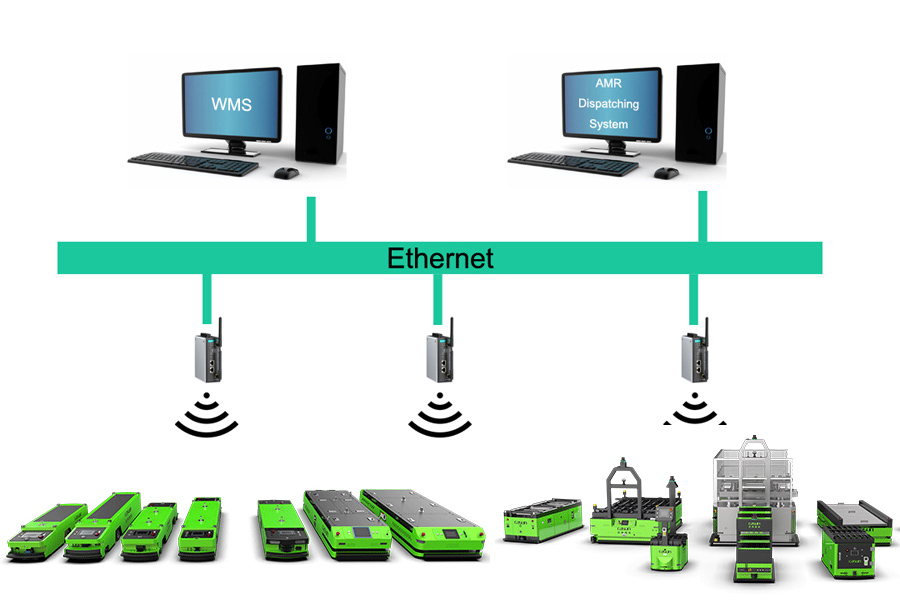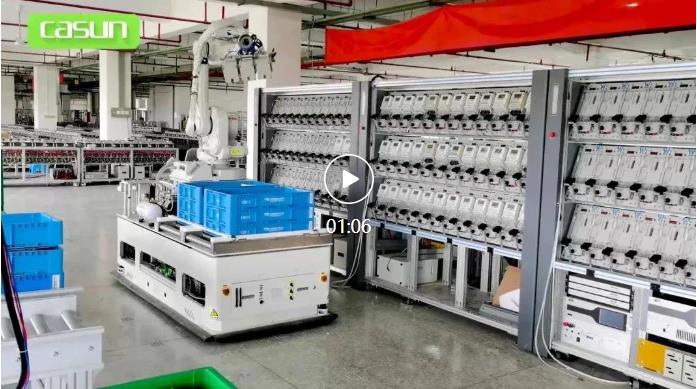Contents
1.Reduce the risk
1.1 Ensure the safety of goods in the warehouse
In addition to improving the safety awareness of warehouse staff, warehouse safety management is comprehensive management of warehouse building requirements, lighting requirements, item placement requirements, fire protection requirements, receiving and dispatching requirements, and accident emergency rescue requirements for items in the storage process. Warehouse managers use these measures to reduce accidental losses and reduce losses.
1.2 Improve inventory accuracy
The accuracy rate of inventory must be set up with reasonable and scientific standards, and the punitive measures for relevant personnel must be matched to improve the sense of responsibility and work enthusiasm of material custodians. The problem of inventory differences is not a simple warehouse management problem. It includes the warehouse itself inspection, warehousing, return, transfer, delivery, safekeeping, material acceptance, returns, and document processing. At the same time, the specifications of procurement suppliers and the accuracy of incoming materials will affect inventory.
1.3 Reduce the storage time of goods and adopt the principle of “first-in, first-out”
The first-in-first-out principle in warehouse management means that in inventory management, the items are sorted in the order of time and source when the items are in the warehouse, and the first-in-stock items are first-out when they are out of the warehouse. The longer the material is stored in the warehouse, the greater the storage risk. The most effective way to reduce the storage risk is to adopt the “first in, first out” principle, so as to reduce the storage time of materials and reduce losses.
2.Increase in profit
2.1 Reasonable planning of the area in the warehouse.
Good warehouse planning is conducive to reducing the number of loading and unloading, shortening the handling distance, reducing the handling links, and minimizing the amount of loading and unloading when the warehouse completes a certain task. Reasonable planning of the warehouse area can be implemented according to the four classification methods of different storage functions, different physical and chemical properties of inventory goods, different use directions of inventory goods, and different commodity suppliers.
2.2 According to the attributes of commodities, a variety of storage methods are reasonably combined.
Warehouse goods stacking methods include the bulk stacking method, stacking method, racking method, and group stacking method. Reasonable storage is based on the attributes of commodities and the three major principles of warehouse storage. The four commonly used logistics stacking methods in warehousing operations are the five-five stacking method, six-positioning method, palletization management method, and classification management method.
2.3 Increase in storage density.
By increasing the utilization rate of storage space, warehouses can be planned and used more scientifically, reducing the operating costs of warehouses, creating indirect economic benefits for enterprises, and reducing investment in storage equipment. The specific method can adopt the method of high stacking to increase the storage height; reduce the channel width in the library to increase the effective storage area; reduce the number of channels in the library to increase the effective storage area.
3.Improve efficiency
3.1 Standardized operation
The standardization of the warehouse management operation process improves the warehouse management level of the warehouse management department, improves the service quality including warehousing, distribution, transportation, document processing, etc., improves work efficiency, reduces warehouse operation costs, and reaches the company and All customer requirements in terms of warehouse management.
3.2 On-site visualization
Visual management is a management method that uses various visual perception information that is intuitive and color-appropriate to organize on-site production activities to improve labor productivity. It is also a scientific method of management using vision.
The characteristics of visual management include the basic means of visual signal display, everyone can see; the basic principles of openness and transparency should be used to make the requirements and intentions of managers visible to everyone. In order to promote autonomous management or called autonomous control; on-site operators can visually display their suggestions, results, and commands, and communicate with leaders, colleagues, and workers.
3.3 Process connection, no blind spots in management and control.
The process is an important concept in warehousing operations. It refers to the important links that are connected in a certain order through storage, storage, inventory, and allocation. In the actual process, many links are interdependent and restrictive.
For warehouse management, the sorting and optimization of processes have a very important link and significance. Improving the scientific and rationalization of processes will help enterprises solve some problems in warehouse management and play a very important role in improving warehouse efficiency.
3.4 Improve the comprehensive ability of employees and increase their motivation.
The development of an enterprise needs the support of employees. Managers should understand that employees are not only a tool, but their initiative, enthusiasm, and creativity will also have a huge effect on the survival and development of the enterprise. To obtain the support of employees, they must be motivated. Mobilizing the enthusiasm of employees is the main function of management incentives. Establishing an effective incentive mechanism is an important way to improve employee enthusiasm and initiative
4. Improve accuracy
4.1 Introduce systematic (WMS) operations
By reducing human intervention, the warehouse management system (WMS) is a real-time computer software system that can better manage information, resources, behavior, inventory, and distribution operations in accordance with operational business rules and algorithms, and make it larger To meet the requirements of effective output and accuracy.
4.2 Ensure the auxiliary work in the warehouse: tally and inventory
The more accurate and detailed the number of materials in the warehouse, it directly guides the business decision-making of the enterprise and is also the most important means for providing financial data for the enterprise and knowing the family status.
In order to make the warehouse management work meticulous, the materials intact, and the data accurate, and to give play to the warehouse’s effect in logistics and its role in management, I think one of the most important and basic methods is to do a good job of tallying and inventorying the warehouse.
4.3 Clear division of labor and clear responsibilities
To achieve a clear division of labor and clear responsibilities, warehouse management personnel need to be given certain management powers. Therefore, it is necessary to establish a strict post responsibility system for warehouse management personnel, clarify the duties performed by each post and the basic requirements that should be met, so that a reasonable division of labor can be achieved, each performing its own duties, clear responsibilities, clear powers, and continuous improvement of storage Management to improve the efficiency of warehouse operations.
5. Optimize layout
5.1 Considering the nature of its own business development, select warehouse areas.
In terms of warehouse location, the selection of geographic location is a process from surface to point. First, the city is selected, then the city location, and finally the specific warehouse area. The location of the warehouse determines the operating cost, circulation efficiency, and future scalability of the warehouse. Finally, comprehensively consider the nature of its own business development, and select a warehouse area.
5.2 Comprehensively calculate the overall cost of the supply chain and optimize the location of the warehouse.
When selecting a site, there are roughly three principles that need to be followed: cost principle, long-term development principle, and close to users principle. Clearly optimize the location of the warehouse by measuring transportation costs, warehouse rental costs, personnel costs, and service (timeliness) costs.

